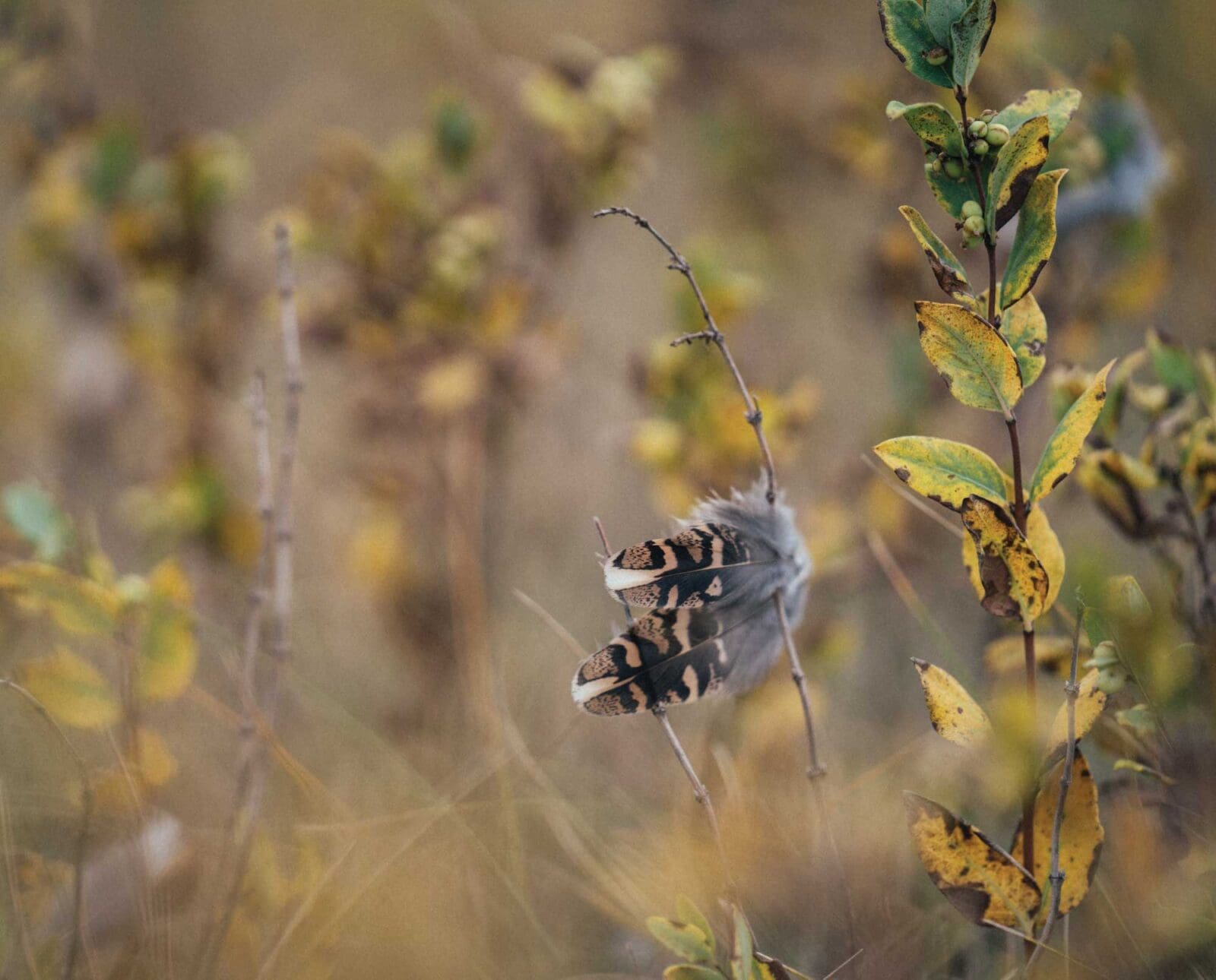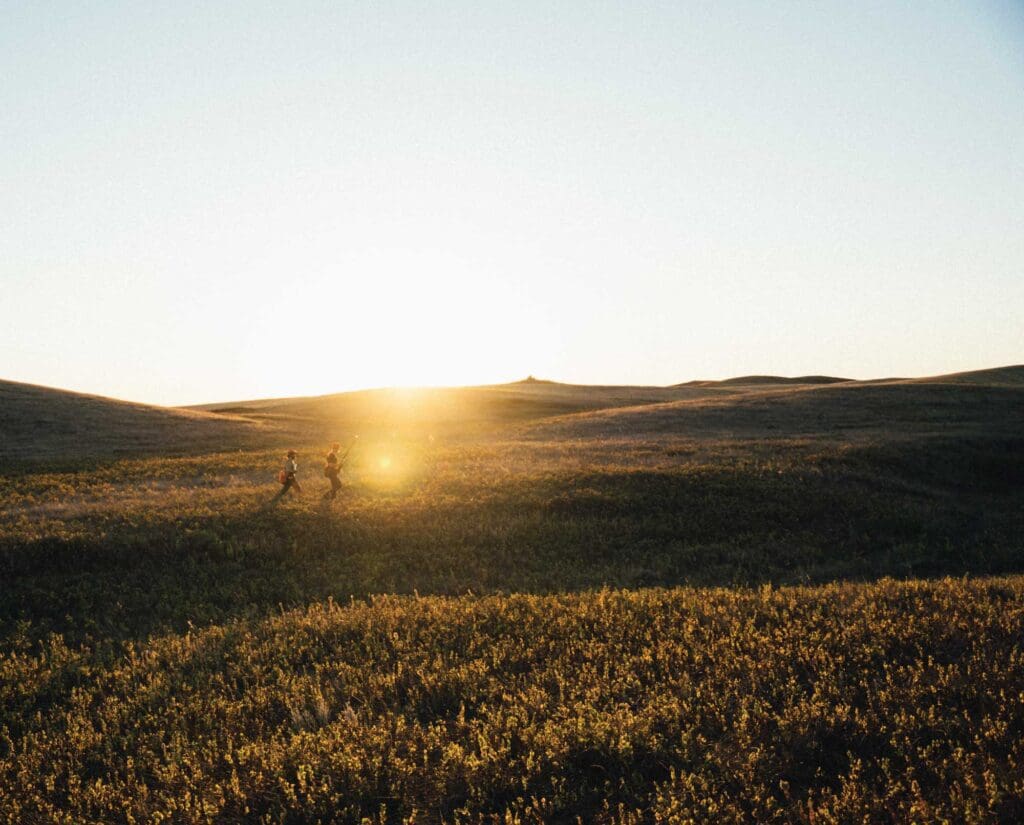Home » Hunting Policy » North American Grasslands Conservation Act Introduced to Senate
North American Grasslands Conservation Act Introduced to Senate

Aaron Kindle is the director of sporting advocacy for the…
America’s massive grasslands shrunk at an alarming rate, but a ray of hope has emerged in the North American Grasslands Conservation Act to bring grasslands and the upland species that rely on them back from the brink.
One billion acres. Those of us who hunt are known for throwing out the acreage for places we hunt regularly. It’s common to hear folks say, “My favorite wilderness area to hunt is 95,000 acres of public lands.” Hunters do so when we are describing areas with lots of room to roam and great hunting opportunities.
But let that number sink in: 1,000,000,000. That was the number of acres of grasslands in the lower 48 prior to European settlement; that’s nearly half of the entire landmass. These grasslands once extended over a thousand miles from Illinois to Wyoming and over two thousand miles from Canada to Texas. It’s easy to surmise that many wildlife species depend heavily on grasslands, and that’s an accurate assumption.
I internalized the size and extent of these vast landscapes when I was a young boy. I spent many days with my father in Wyoming’s sage steppe ecosystem hunting Greater Sage-Grouse, searching for horny toads, and watching pronghorn gallop over the horizon. Those lands felt so huge, endless, and indestructible. Back then, I didn’t know that places like those were and are disappearing, and are more essential to wildlife than my young mind could conjure up.
These important landscapes are home to native upland birds including several that hunters pursue such as Sharp-tailed Grouse, Greater Prairie-Chickens, Greater Sage-Grouse, Northern Bobwhite, and even the non-native bird we love to chase, the wily Ring-necked Pheasant. The astonishing array of American grasslands also includes much of the Prairie Pothole Region of the northern plains. Although many of us set out to hunt our favorite upland species there, this place is also critical to millions of waterfowl that migrate through each spring and fall. As part of the central flyway, these vital lands provide important breeding and stopover habitat for thousands of waterfowl species including the Northern Pintail, Mallard, Gadwall, Blue-winged Teal, Northern Shoveler, Canvasback, and Redhead. Add this to the dozens of mammals, song birds, and fish species, and we realize quickly that the importance of grasslands really cannot be overstated.
Grasslands have been converted to other land uses
Nearly 75 percent of all grasslands in the U.S. are gone. Grasslands have been plowed for agricultural production, paved over for urban development and roads, converted to other uses, and generally overlooked and mistreated.
The loss of habitat has resulted in a massive decline of plants and wildlife species, many of which are now on threatened and endangered lists. Consequently, over three quarters of grassland bird species are in decline. Grassland game birds, like quail and prairie grouse species, are some of the most rapidly declining species in the country due to this incredible and widespread habitat loss.
READ: Will the Lesser Prairie-Chicken Be Listed Endangered?
However, there is a ray of hope. Healthy, well-managed, working grasslands not only provide forage for livestock, but they also provide excellent wildlife habitat, particularly for grassland birds, as well as other highly valuable ecosystem services. Even better, many overutilized grasslands can still be restored.
Restored grasslands helps fight climate change
Restoring grasslands can be a huge part of the solution to combat climate change. The long, deep roots of native grasses hold the soil in place and sequester large amounts of carbon into the soil. In fact, grasslands sequester more carbon than temperate forests.
When grasslands are plowed and converted to cropland or human developments, carbon that has been stored in the soil dissipates into the air. This adds to already increasing levels of carbon dioxide in the atmosphere. Conversely, avoiding grasslands conversion, incentivizing sound land stewardship, and restoring native grasslands stores and sequesters carbon. These are examples of natural climate solutions that provide benefits for farmers, ranchers, and grasslands-dependent wildlife. These activities also result in improved hunting opportunities and more collaboration between landowners and the sporting community; a true win-win.
Like so many of our greatest natural resource challenges throughout American history, the sporting community is driving the solution.

North American Grasslands Conservation Act – Partnerships Drive Grassland Conservation
A robust coalition of conservation organizations have combined forces to bring forth the concept of the North American Grasslands Conservation Act. The National Wildlife Federation along with our great sporting partners like the Theodore Roosevelt Conservation Partnership, Pheasants Forever, Quail Forever, the National Deer Association, the North American Grouse Partnership, Backcountry Hunters and Anglers, the National Bobwhite Conservation Initiative, and our conservation friends in the grasslands world have taken the highly successful model of the North American Wetlands Conservation Act (NAWCA) and mirrored it to create a model for conserving and restoring grasslands.
The North American Grasslands Conservation Act will kickstart the voluntary protection and restoration of grasslands – and the wildlife and livelihoods that depend on them – by creating a landowner-driven, voluntary program to conserve and restore threatened grassland and sagebrush steppe ecosystems across the United States. A chief goal of the Grasslands Act is to keep grasslands working by providing voluntary technical and financial assistance to landowners that will both increase the conservation and restoration of grassland ecosystems while simultaneously building climate resilience and sustaining agricultural livelihoods and wildlife abundance. Like NAWCA, the Grasslands Act will fund voluntary conservation and restoration techniques and promote partnership with tribal and non-government entities to help restore America’s grasslands and create even greater impact through said partnerships.
The North American Grasslands Conservation Act Utilizes Voluntary, Incentivized Conservation Programming
A huge key is the voluntary nature of this program. If a landowner wants to conserve and restore grasslands, the Grasslands Act will help with numerous resources at the rate and extent the landowner chooses. If not, the landowner can go about his or her business. The sporting community appreciates this type of voluntary, incentive-based action. We believe that model invites partnership and collaboration, resulting in lasting conservation victories.
We also believe that this excellent coalition of sporting and conservation organizations and the leadership of Senators Ron Wyden of Oregon, Michael Bennet of Colorado, and Amy Klobuchar of Minnesota can bring grasslands back from the brink so that one day again we will proudly proclaim that grasslands are indeed “America’s Serengeti.” Restoring America’s grasslands ensures that we can once again enjoy widespread, abundant hunting opportunities for bobwhite quail, sage-grouse, and prairie-chickens, and enjoy the melodies and flashy colors of abundant and healthy populations of migratory songbirds.
This is another clarion call for the future of America’s ecosystems and an opportunity for America’s hunters to step up and drive home a key conservation victory again. The opportunity for your kids and their kids to hunt species like bobwhite quail depends on it.
The North American Grasslands Conservation Act will be introduced into Congress soon. Please contact your Congressional delegation today and ask them to support the North American Grasslands Conservation Act. For more information, visit www.actforgrasslands.org.
Aaron Kindle is the director of sporting advocacy for the National Wildlife Federation. He hunts and fishes all across the West, but mostly in his home state of Colorado. Contact him at kindlea@nwf.org. Learn more about NWF sporting conservation work at www.nwf.org/outdoors and www.artemis.nwf.org. You can also find the NWF Outdoors and Artemis podcasts wherever you get your podcasts.




I’m 100% in favor of protecting our nations grasslands. I feel people don’t realize just how important protecting our grasslands are. The many birds, insects, plants, and animals that rely on grassland are so beautiful it would be a crying shame if America doesn’t do anything to save them.